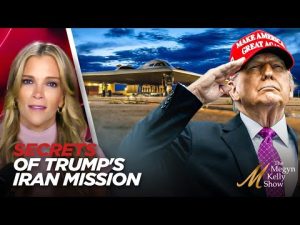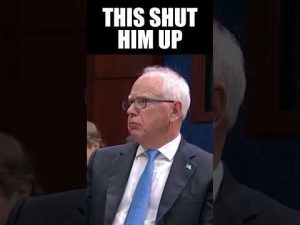The recent discussions surrounding U.S. foreign policy, particularly in relation to Iran, have stirred quite a bit of chatter among pundits and political analysts alike. The focus has shifted to the potential for regime change in Iran, a topic that President Trump has recently weighed in on, igniting a debate about the administration’s stance. With Iran’s dissatisfaction from its people boiling over, the implications exist not just for the U.S. but for the Iranian populace yearning for change.
Inside political circles, there’s a growing consensus that the Iranian government, often referred to as a “terrorist dictatorship,” is facing an uphill battle in maintaining control over its citizens. Many are fed up with oppression, violence, and the suffocating grip of the regime. Speculation around regime change isn’t merely wishful thinking; it’s becoming an assertion based on the realities on the ground. The message from Trump seems clear: if the current leaders can’t make Iran great again, perhaps it’s time for a change. This sentiment resonates deeply, indicating that the shifting tide may favor the Iranian people who are eager to reshape their future.
Meanwhile, the administration has reiterated that it doesn’t seek to overthrow the Iranian government but emphasizes the importance of preventing Iran from developing nuclear capabilities. This situation surfaces the complexities of foreign engagement—are we at war with a nation or just its policies? The Vice President recently underscored the need to combat the Iranian nuclear program while differentiating it from the Iranian people themselves. This nuanced perspective highlights the intricate dance of diplomacy and military strategy playing out on the world stage.
Amidst this backdrop, tensions have escalated, evidenced by recent missile strikes launched by Iran, which Iran claims were successful in targeting U.S. bases in Qatar. However, reports indicate that U.S. defenses efficiently intercepted these missiles, reinforcing America’s position in the region. Even as Iran boasts of victory, many view this as a desperate attempt to save face given the stark reality of their weakened stance after recent U.S. and Israeli actions.
This struggle for power and respect in the Middle East is not new, nor is it simple. The balance of strength often dictates how countries interact, and while the Iranian leadership tries to project an image of military prowess, the reality is that their position has eroded significantly. There’s a palpable sense that they’re trying to reclaim a narrative that, frankly, is harder to uphold after the strategic moves made by Trump during his presidency. He’s known for his decisiveness and understanding of regional dynamics, which many believe plays a crucial role in shaping the current landscape.
Donald Trump’s historical moves, like the elimination of key figures such as Soleimani and the push for peace through agreements like the Abraham Accords, demonstrate a clear strategy: engage with strength. As discussions continue, the sentiment is that, while the U.S. pursues its agenda of non-proliferation, the real power lies within the people of Iran who may ultimately dictate the future of their nation. The upcoming path remains uncertain, but one thing is clear: the Iranian regime’s days may be numbered if the winds of change continue to blow from the hearts of its people.







